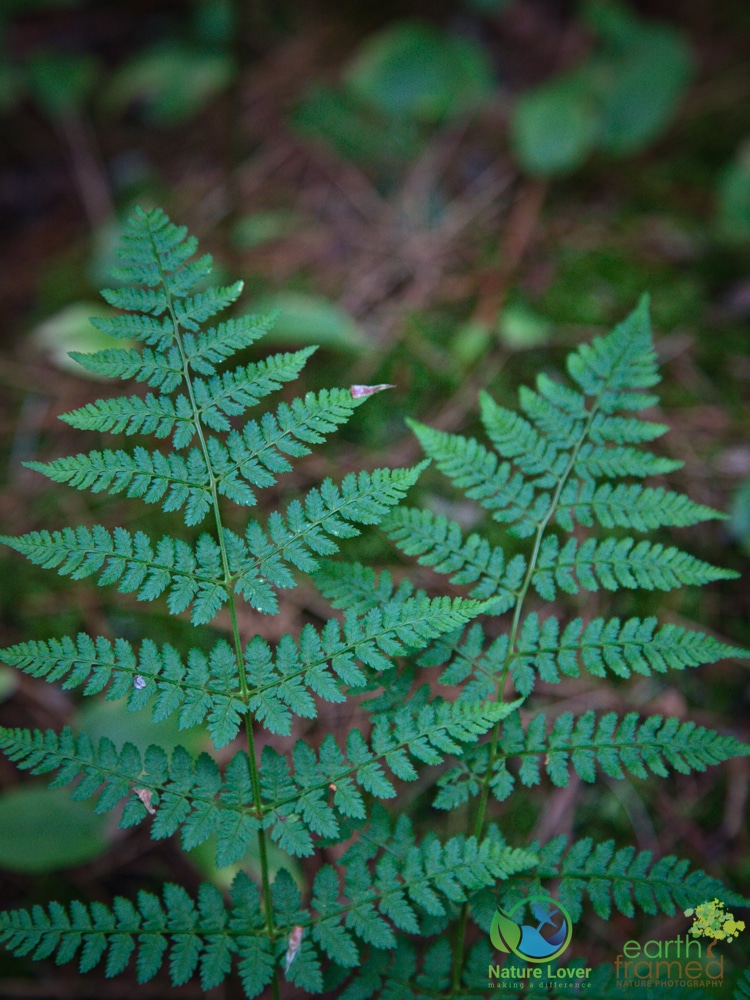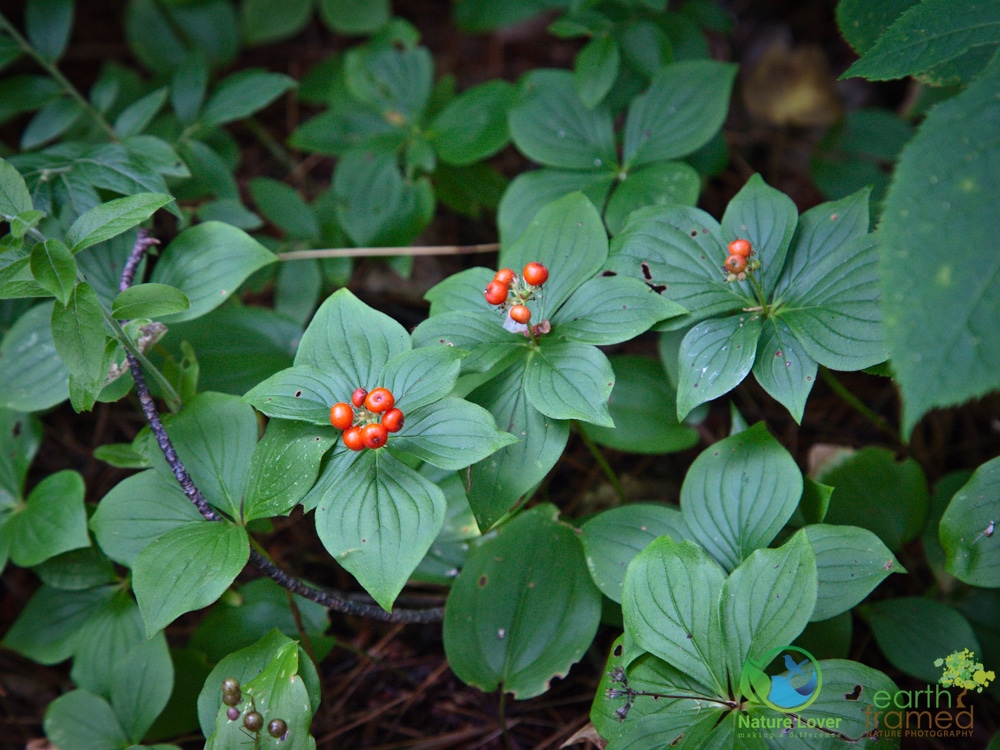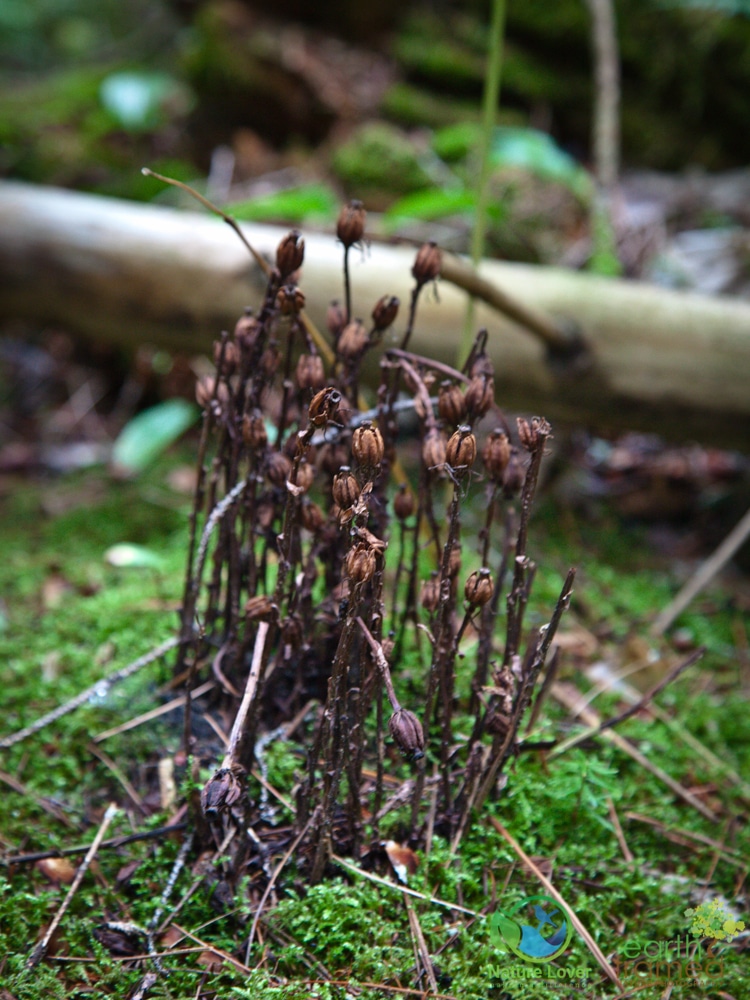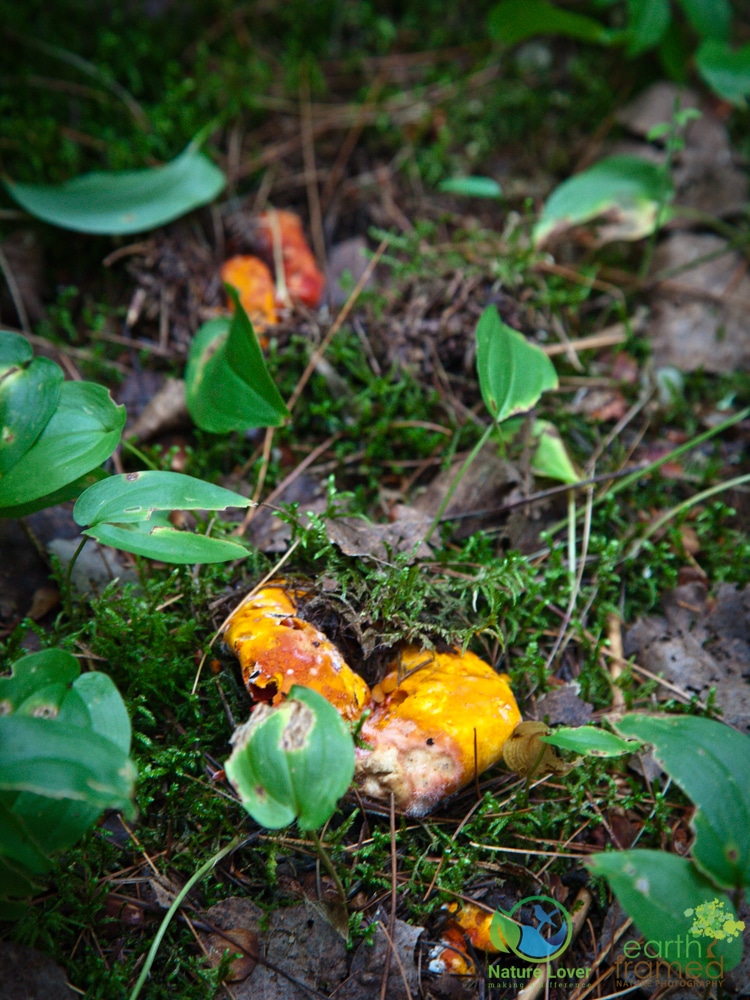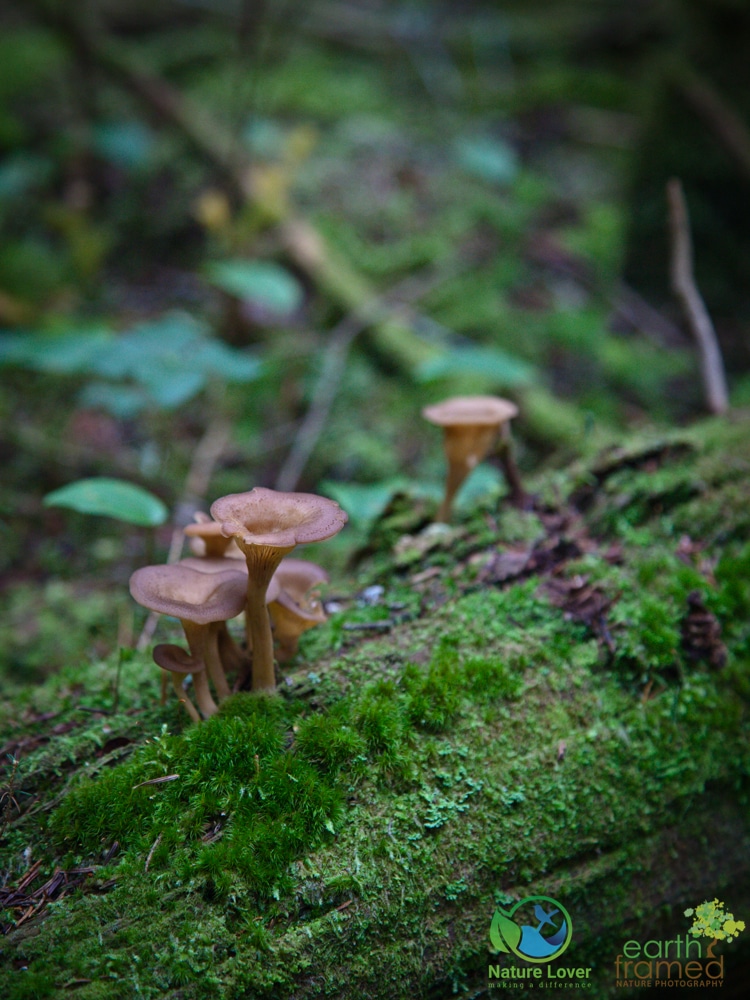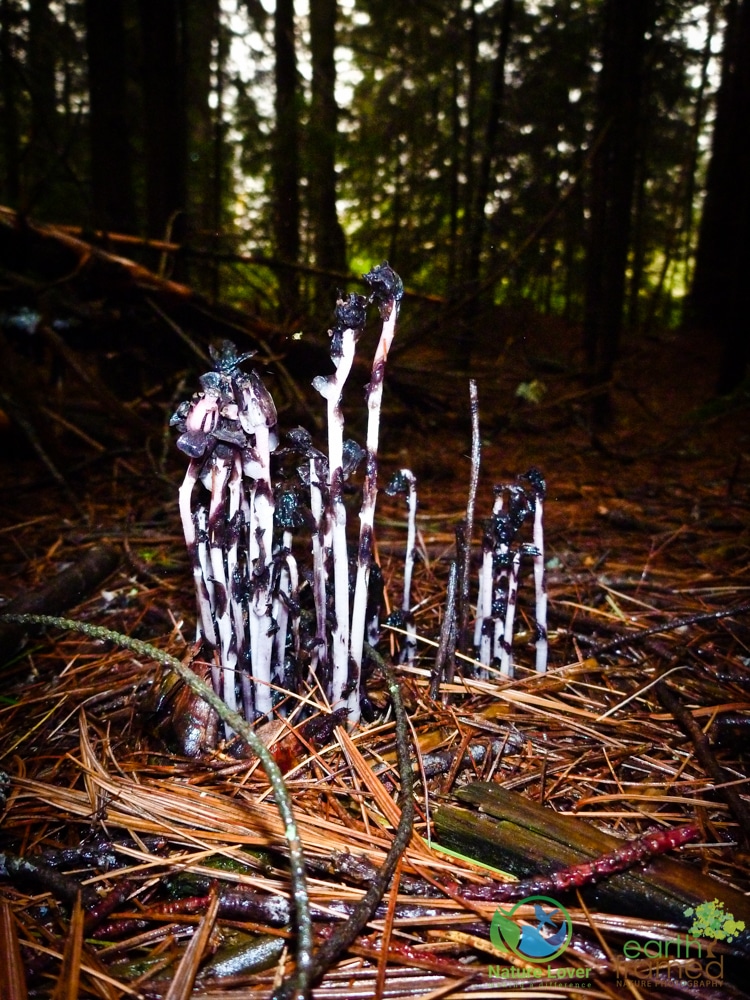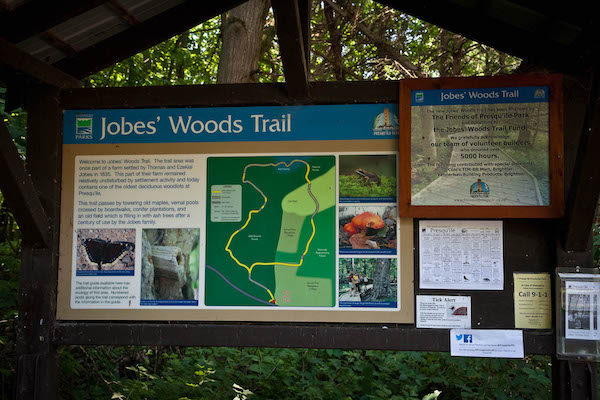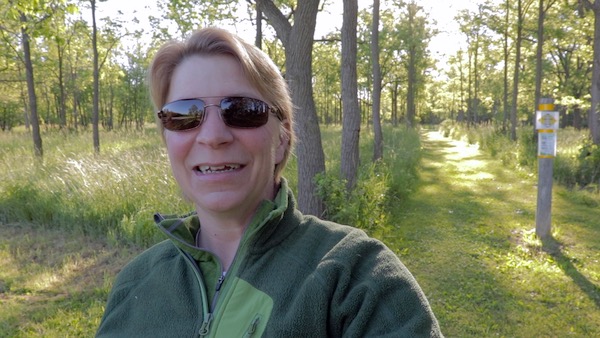Rain and a senior dog deterred us from hiking the whole trail during our trip to Algonquin Park in the summer of 2016. We did have the opportunity to enjoy the beginning of the trail and to find several wildflowers and mushrooms along the way.
Starflowers are native wildflowers that you will find throughout most of Canada, not including the arctic. These beautiful, yet delicate, plants bloom from May to August and are found in cool forests. It’s easy to see, from the shape of the leaves, why these are called Starflowers.
The trail had numerous ferns scattered throughout the forest floor. One of fern species we spotted was this Wood Fern. The Wood Fern family includes over a dozen species and to narrow it down to one species can be more difficult than one might think. First, I would have needed to take more pictures of various parts of the fern. I am fairly confident that this is either an Intermediate Wood Fern or a Spinulose Wood Fern. Unfortunately, I needed a few more shots in order to accurately state which one it was.
The sori of the fern, which can be found on the underside of a fertile frond, can help identify, or at least narrow down the species of a fern. Above you can see a very fertile plant with lines of sori on each leaflet.
Bunchberry (native) are a common wildflower found in central Ontario and they are easy to identify. Look for the pointed leaves with the veins curving into an arch toward the tip of the leaf. Also, depending on the time of year, you’ll find either small yellow-green flowers or tight clusters of red berries above the whorled leaves.
Tight stands of dried Indian Pipe were spotted along the trail. Notice that as they dry, the cups point to the sky, where usually they droop toward the ground. I wonder why that is?
I thought by purchasing a few mushroom identification books it would make it easier to label them as I photographed them during my journeys. I couldn’t have been more wrong. Perhaps it is the books that I have, or the fact that I am reluctant to pull mushrooms out of the ground to photograph their undersides. My problem could be that I currently lack the knowledge and understanding to be able to even place a mushroom in a particular group. Whatever the reason may be, I continue to enjoy to seek them out during hikes and photograph them. 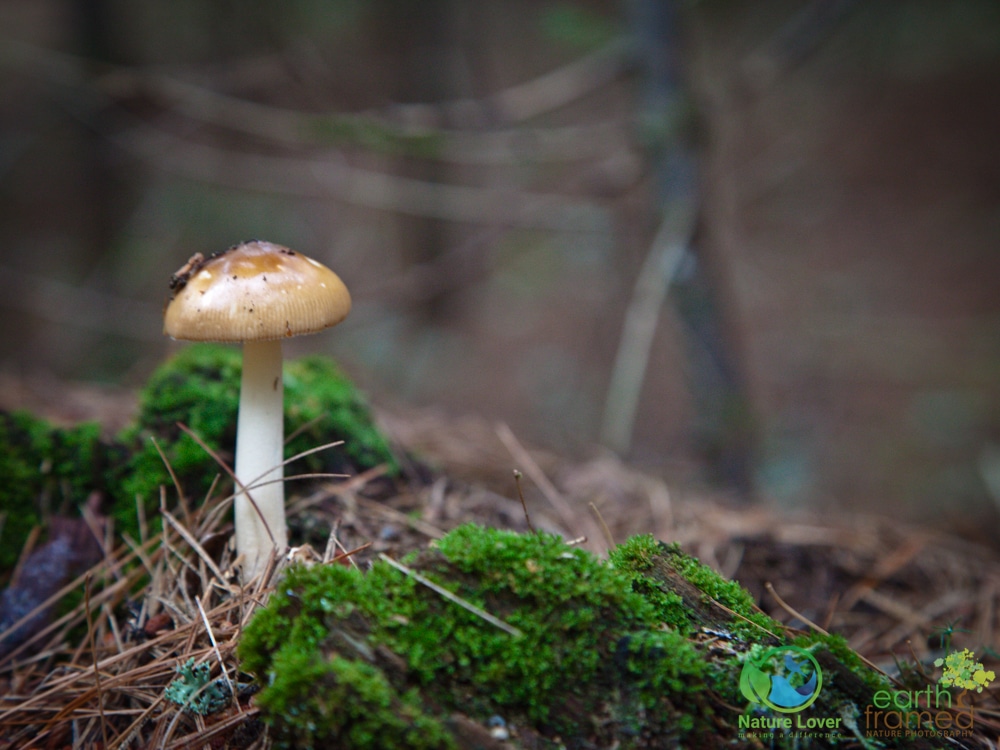
I find I often use the weather as a motivator to spend extra time looking for mushrooms on the forest floor. On overcast days the light is frequently too flat to capture interesting landscape images but they seem perfect for mushrooms. Throw in a recent rainfall, and photographing mushrooms becomes even more pleasing and rewarding.
These funnel-shaped light-spored mushroom were thriving on a fallen conifer log that was rotting where it laid. Check out the visible gills and if I had taken a really up-close image you might have seen their hairy bases! These mushrooms are also known as Clitocybe ectypoides.
After the rain started we quickly turned around to make our way back to the truck. During this week we had experienced some heavy downpours, so we did not want to get caught on the trail. Along the way we noticed some Indian Pipe, also known as the Ghost Plant, that we had not seen earlier. The heads, or cups, have started to reach for the sky, will this plant dry out soon?
Sources:
Barron, George L. Mushrooms of Ontario and Eastern Canada. Edmonton: Lone Pine Pub., 1999. Print.
Chambers, Brenda, Karen Legasy, Cathy V. Bentley, Shayna LaBelle-Beadman, and Emma Thurley. Forest Plants of Central Ontario. Edmonton, Alta., Canada: Lone Pine, 1996. Print.
Niering, William A., Nancy C. Olmstead, and John W. Thieret. National Audubon Society Field Guide to North American Wildflowers: Eastern Region. New York: Alfred A. Knopf, 2001. Print.




